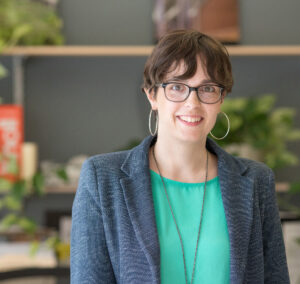 As part of the Committee on Architecture for Education’s (CAE) 2020 focus on climate change and its effects on the educational built environment, CAE engaged the expertise of local design professionals with a specialty in sustainability to explore the most urgent climate change concerns and resolutions that our industry must consider moving forward.
As part of the Committee on Architecture for Education’s (CAE) 2020 focus on climate change and its effects on the educational built environment, CAE engaged the expertise of local design professionals with a specialty in sustainability to explore the most urgent climate change concerns and resolutions that our industry must consider moving forward.
This interview series includes discussions with Directors of Sustainability from Baltimore architecture firms and sustainability leaders within the AIA Baltimore Chapter, specifically seeking what is working, what is not working, and what are the next steps forward to optimize sustainable design. The series tackles how to better tailor the tools available to us for each project, successful (and unsuccessful) processes, accountability for performance-based design, and how to successfully communicate with project owners to achieve a truly sustainable result.
Today’s interview is with Úrsula Fernández del Castillo, AIA, co-chair of the AIA Baltimore Committee on the Environment and Resiliency (COTE | R) and a Project Architect at Gensler.
What isn’t working?
LEED is too much documentation, becomes a hindrance to projects in both time and money. People tend to not want to spend the time and money on certification, even if the idea is awesome. It’s challenging to talk to clients and get them on board.
What is working?
Gensler tracks all of their data, and this comes from management down. Every project has a sustainability goal that they have to meet, and that is decided by the leadership of the firm, and the team is held to it, so they meet the AIA 2030 Commitment.
Conferences are a great resource and education opportunity, and inspiring.
What do you need?
Education on soft skills for how to communicate with your clients about sustainability, how to share your knowledge with them, and how to get them on board.
The best ways to implement sustainability at the beginning of each project.
What’s next?
We don’t need permission to design sustainably!
Embodied carbon as a focus – EC3 tool http://www.carbonleadershipforum.org/projects/ec3/
What materials, resources, and energy is taken up to build a new building?
Stricter regulations, such as in Spain, where solar power is mandatory.
AIA will hopefully make all projects that get awards meet some form of sustainability marker.
